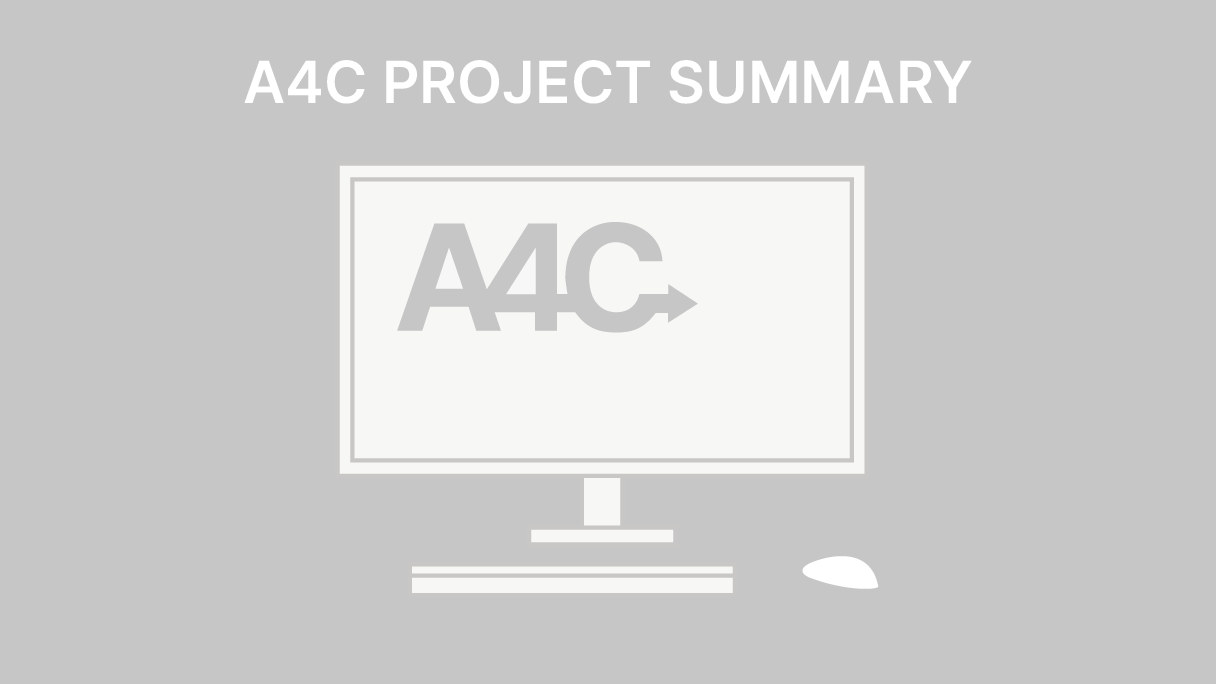How to use the 10 themes
There are 10 climate emergency design themes around which the ARCH4CHANGE content is structured. These 10 themes reflect the different aspects to be considered in holistic sustainable architecture approaches. In practice, all of these themes must be met to high standards to create truly sustainable architecture in reality. However, as a student you do not need to know all the 10 themes in-depth from year 1. Instead, future and global responsibility, environment and people and community themes should always be included in each design project in each year of study. Each year, each student then works progressively towards including additional themes until all ten are included in your design project by the end of the studies
5-step Design Process
The 5 step iterative process and 10 climate emergency design themes will help you in the design-decision making process and in justification of your approach. To centre sustainability at the start of your project and refine it throughout you need to undertake integrated design and iterative design processes. Exploring your project’s context helps to make design decisions based on knowledge (Step 1) and helps to define project values and your climate emergency design approach (Step 2). This then sets a good foundation for imagining and testing (Steps 3, 4), and refining your architecture approach based on feedback loops (Step 5). Make sure you communicate your values and climate emergency design approach clearly and explicitly – this helps in the testing and feedback phase
Adaptable Infrastructure
Adaptability ensures that infrastructures keep meeting an individual’s, community’s and society’s changing needs over time, but also includes adapting to a changing climate. Adaptability ensures longevity: it reduces risk of premature building obsolesce and demolition when they no longer meet our needs (because they can be adapted) – this is part of circular thinking and climate change mitigation and adaptation approaches. Adaptability reduces transient communities and supports stability, diversity and community cohesion, this is also part of creating inclusive and equitable infrastructures and long-term resilience. As such your project should put adaptability at its core, at micro, meso and macro-scale. A key aspect of this is the creation of different scenarios and personas over time (e.g., scenarios of possible functions, changing climate, modes of use, etc.) and reflect this in at least one alternative layout (i.e. design) scenario for your project. Ensure that your project also enables future adaptability at different scales.
Inclusive Infrastructure
Designing inclusive infrastructures is an essential part of climate emergency design and is an iterative process that you need to see through all stages of your project design (i.e. explore, define, imagine, test and feedback). Inclusive infrastructures means that inhabitants are part of the design and decision-making process through democratic processes. It also means that spaces can be used and accessed by as many people as possible regardless of age, gender and ability, i.e. they are accommodating and welcoming all. A solution can’t be resilient by itself. It is only resilient when it is adopted and taken ownership of by the community and this is best done through inclusive bottom-up approaches. There are many ways you can include democratic processes and inclusive design in your project, even as a student. For example, you can create a ‘Democratic Design plan’; this helps you to Identify your users (human and non-human), acknowledge and involve your users and to create design approaches that care for your users (including nature & non-humans).
Social Infrastructure
Social infrastructure encourages the connection and coming together of people and this includes formal and informal public & private spaces and places that provide opportunities for people to interact with each other in their everyday lives. Social infrastructures supports the building of social capital in the community; this in turn reduces conflict and increases trust, care, connection and feelings of safety. This helps to build individual and community resilience and health and well-being. In your project, always consider what kind of spaces can bring people together from different walks of life and how you can create links with the existing communities. Be careful to impact the existing social spheres positively and not negatively i.e. restorative actions. Ensure that the social infrastructure you suggest answers to the needs of people and are adaptable to their changing needs in the future, otherwise they will not meet needs and remain unused – so undertake inclusive and democratic processes. Always prioritise inclusion of social infrastructure in each and every project, including retrofitting of social infrastructure as the societal, community and individual benefits are significant.
Green Infrastructure
Green infrastructure is the network of natural green spaces and landscapes within and around urban environments, such as food-growing areas, wetlands, forests, parks and wildlife gardens. Green infrastructure supports biodiversity, enhances ecosystem health, absorbs CO2 and manages adaptations to a changing climate (e.g. flood prevention and overheating). Co-benefits are supporting social activity and human well-being. Your project must tread lightly: after all, placing a new structure is hugely disruptive, as the developed land will have lost its existing ecological value forever. Your choice of site is therefore vital and value and protect existing natural habitats and leave the place better than it was before (i.e. retorative action). To do that, create a green infrastructure plan for your project that identifies and creates a map of the potential impact of your design on existing green infrastructure and on stakeholders and propose remedial measures to ensure a restorative approach. Distribute green spaces of different scales and diversity throughout the city within short walking distances and connect wildlife habitats through parks with green corridors and pedestrian spaces. Prioritise views of nature and trees, integrating generous physical access to different kinds and scales of nature for human and non-humans.
Blue Infrastructure
Description Blue infrastructures are natural and human-made water systems at different scales. Integrating blue infrastructure at different scales in your project has multiple benefits, for example for biodiversity, the urban micro climate, reduced water consumption, and they can act as social infrastructure and for climate adaptation. Working with water rather than against it can lead to restorative actions (e.g. by giving water space; recharging the ground water through permeable paving; enabling the thriving of other species).
In your project:
• Map natural and human-made water bodies and understand how your site is affected by water as a threat or an opportunity (e.g., rivers, sea) now and in the future.
• Use permeable landscape surfaces, include space for water retention systems that are also dual-purpose, i.e., spaces for leisure to act as social infrastructure and space for enhancing biodiversity (restorative actions) and that can store water in extreme weather events as part of climate change adaptation.
• To mitigate climate change at micro-scale, always consider efficient appliances as a priority. Then consider water recycling strategies that are low in energy use and embodied energy, e.g. simple rain water harvesting techniques.
Finally, sustainable urban drainage systems (SUDs) need to be combined at all scales: they all act together to mitigate and adapt to climate change and tackle the biodiversity crisis.
Justice
Designing for the climate emergency is not only about focusing on direct impacts (i.e., reducing energy use and CO2 emissions), but responding to its symptoms, (in)direct causes and often unequal consequences. As architects we also hold a significant responsibility towards the public in our work: we are designing the spatial frameworks in which people live their lives and participate in society. As an architect you have a moral obligation to make better decisions, even if you are not rewarded for doing so. This requires a commitment to continuous research, conscious decision-making, curiosity, and creativity to innovate and to challenge the often damaging and unfair status quo. It also requires an in-depth understanding of questions of fairness and justice related to one’s own work.
Planetary Health
Your project should never contribute to tipping points and ecological or climate breakdown. Instead, use your design to identify how you can positively impact the planet and restore some of the previous damage done. This means redirecting current human-centric design approaches towards an inclusive, biodiverse, restorative future using the principles of radical inclusivity, biophilia and topophilia. We should strive towards an approachable architecture that can be used by different living-beings in different (adaptable) ways. Following these principles steers us towards more ethical professional practices that support planetary health, instead of damaging it.
IAQ Indoor Air Quality
Indoor air quality (IAQ) is an important factor in human health, comfort, and productivity. It includes factors such as temperature, humidity, and the presence of pollutants. Poor IAQ can lead to a variety of health problems, such as respiratory diseases, allergies, and asthma. It can also impact building performance and energy efficiency. IAQ is affected by activities and materials inside buildings, as well as outdoor air pollution. Sources of indoor air pollutants include combustion sources, building materials, cleaning products, pesticides, and people. Sustainable architecture seeks to minimize the environmental impact of buildings, including minimizing the release of pollutants and creating buildings that are resilient to climate change. The COVID-19 pandemic has brought renewed attention to the importance of good ventilation and air filtration in indoor spaces.
Meeting User Needs
User Centered Design is an approach to architecture that places the needs and preferences of the end users at the center of the design process. This involves conducting research to learn about demographic, makeup, behaviors, and the preferences of people who use the space. The goal is to create buildings and spaces that are functional, accessible, safe, and appealing to the people who use them. Inclusive public spaces are critical for creating communities that are welcoming, safe and equitable for all individuals. These spaces may play a critical role in promoting social cohesion, reducing discrimination, and building stronger relationships among diverse groups of people. By considering the needs of people with different physical abilities, we can design spaces that are more accessible, and by considering the needs of families with children, architects can design spaces that are safe and appealing for children to play in. User Centered Design can lead to higher levels of user satisfaction and a sense of ownership and responsibility for the spaces that they actually use and care about.
Life Cycle Assesment
Lifecycle Assessment (LCA) is a methodology used to evaluate the environmental impacts of buildings, products, and materials at all stages of their lifecycle. It looks into resource use, pollution, waste, toxicity to air, water, land, humans and ecology, energy and carbon used for extraction, transportation, and manufacturing, and maintenance, demolition, recycling, and waste disposal. Lifecycle Costing (LCC) is a method to assess the financial impacts of buildings, products and materials at all stages of their lifecycle, including the cost of extraction, transportation, production and construction, maintenance, and replacement. In Denmark, from 2023, LCA will be obligatory for all new buildings with more than 1000 square meters. LCC and Whole Life Costing (WCC) are important to consider the long-term costs and benefits of design decisions, and to take into account the resale value of dismantled building elements for reuse in the future. LCA and LCC are useful to understand and evaluate the impacts of material choices, and make more informed decisions.
Sustainable Sources of Materials
Key points in material selection include aligning with the environment, socio-cultural factors, and economics, while also focusing on local availability, craftsmanship, and construction methods. Priority lies in minimizing resource use, opting for non-toxic, low-energy, and low-carbon materials, like carbon-sequestering timber. Attention to human health and regional construction practices is crucial.
Local availability and climatic suitability often dictate material choices. Investigate local artisans, existing solutions, and production processes for improvements.
To prevent over-harvesting, explore nearby renewable material sources with clean extraction. Certified materials, like FSC timber, uphold sustainability.
Reuse is paramount; existing structures and materials should be considered first. Urban mining views buildings as material banks, advocating for reuse and repurposing of anthropogenic materials. To source reused materials, create a harvest map detailing resources from demolished buildings, recycling centers, and local surpluses.
Natural Materials
Natural materials are found in nature and can be used for structure elements, roofs, insulation, external and internal cladding or furniture. Renewable materials are those that can be easily replenished, such as timber, fax, cork, hemp, cob, stroke, grasses, salt, bamboo and seaweed. Non renewable materials should be natural and abundant, such as stone, earth, clay, sand or organic slightly processed materials. Biogenic materials sequester carbon and absorb more CO2 than they produce in extraction and manufacturing. Recently, there has been an approach to natural materials that focuses on innovation in cultivating, breeding, raising farming or growing future resources, such as wood foam, bio polymers, and fungal mycelium. These materials are cost effective, biodegradable, and have high insulation properties, flame resistance, and a favorable indoor climate
Circular Materials
Circular materials are part of circular material flows which promote reuse and reversibility. This includes adaptive reuse of deteriorated abandoned buildings or other existing structures, urban mining, and reclaiming materials for reuse in place or elsewhere. Recycled materials are reprocessed into products, materials and substances, while upcycling and downcycling involve transforming and reinventing ordinary objects into extraordinary elements. Reusing materials can reduce demand for primary resources, reduce carbon emissions, and minimize the amount of waste generated in the future. Reuse and recycled materials can be found in reuse material shops, second hand shops, or online platforms, and a harvest map can be created to show accessible sources of construction waste or other materials.
Building Fabric
The talk focuses on the crucial role of building fabric, also known as the building envelope, which remains relatively constant over time but holds immense influence over a building's comfort systems. This envelope acts as a shield against external weather conditions and microclimates, encompassing factors like solar radiation, wind, precipitation, temperature, and humidity. As our climate undergoes shifts, the quality of the building fabric becomes even more vital. It has the potential to greatly reduce the reliance on heating, cooling, lighting, and ventilation systems, effectively minimizing energy consumption and carbon footprint. Essential elements for designing in response to climate changes include weather protection, insulation, air tightness, and moisture management. Moreover, design choices should incorporate aesthetics, accessibility, and materials.
Options like sealed and permeable systems exist for effective weather protection.
Insulation is a cornerstone consideration, recommending thicker insulation for colder climates and strategies like the passive house standard for comprehensive energy efficiency.
Airtightness is paramount in temperate and cold climates to prevent heat loss, while a balanced ventilation system ensures optimal indoor air quality. Managing internal moisture is equally vital to avert issues like mold growth and material deterioration.
Incorporating thermal mass, whether structural or non-structural, can enhance a building's capacity to absorb and release heat.
Passive Design Approaches
Passive House design is an innovative approach in architecture that focuses on achieving exceptional energy efficiency and comfort within buildings. This approach is rooted in the principle of minimizing energy consumption by utilizing natural resources and optimizing the building envelope.
Passive House buildings are meticulously designed to maintain a constant indoor temperature through careful insulation, airtight construction, and efficient ventilation systems. High-performance windows, advanced insulation materials, and thermal bridges reduction are integral components of this strategy. By harnessing solar gains and internal heat sources, these buildings can significantly reduce the need for traditional heating and cooling systems.
The Passive House concept prioritizes a holistic design philosophy, emphasizing the synergy between architectural elements and energy efficiency. Notably, it aligns with sustainable practices by substantially reducing greenhouse gas emissions and promoting long-term environmental sustainability.
















